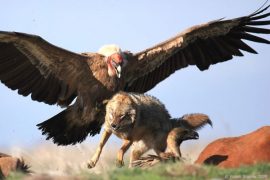Facts About The Andean Condor
Facts about the andean condor
The Andean Condor (Vultur gryphus) is a South American bird that belongs to the New World vulture family Cathartidae, and is the only living member of the genus Vultur. Although it’s numbers are dwindling in the country, the Andean Condor is actually the national animal of Colombia.
Despite its enormous size, stunning plumage and fascinating behavioural traits, not many people know about this beautiful bird. If you’re one of these people then don’t worry, you will be a Andean Condor expert after reading our unusual facts below.
1. The largest Raptor in the world
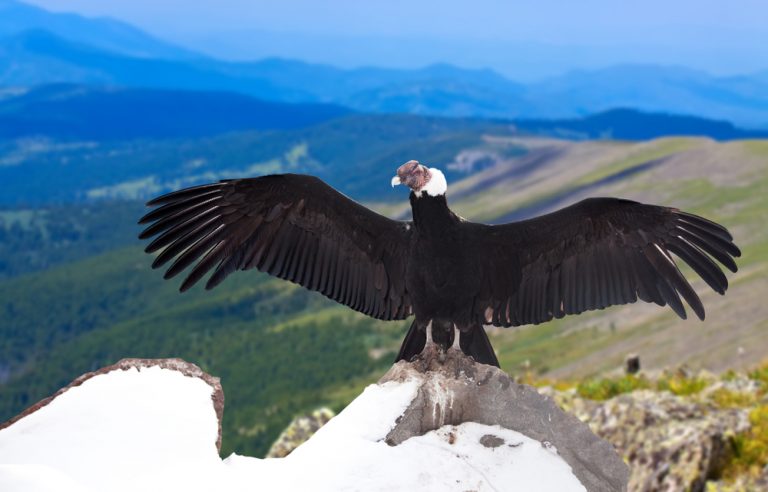
The Andean Condor showing its wide wingspan. Photo credit: Shutterstock.
With a wingspan of over 3 meters (10 feet), the Andean Condor is considered the largest flying bird in the world. Fully grown adults can reach a whopping 15 kg (33 pounds) and can stand an impressive 1.2 meters tall. This stunning creature is the largest Raptor in the entire world.
2. Aren’t the best flyers
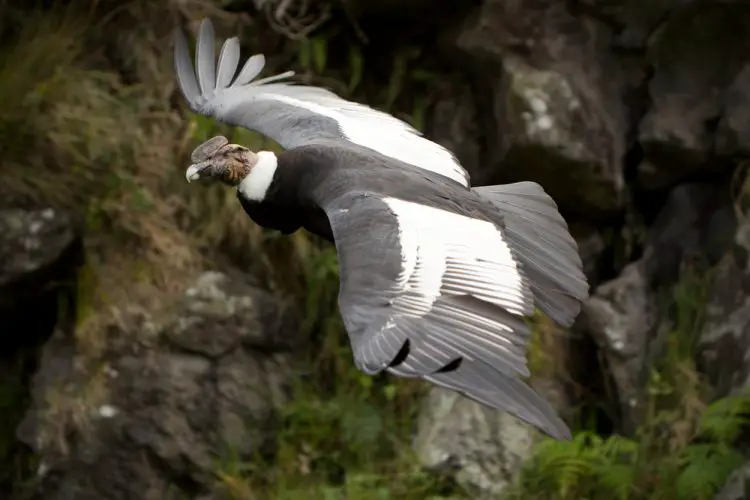
The Andean Condor Flying. Photo credit: Shutterstock.
Even with their impressive wingspan, Andean Condors sometimes have a hard time staying aloft when in flight, due to their enormous weight. That is why this bird prefers windy areas, where it can glide effortlessly on the air currents. Andean Condors, with the help of mother nature, can soar up to a breathtaking height of 5,500 meters!
3. Have a very distinctive look
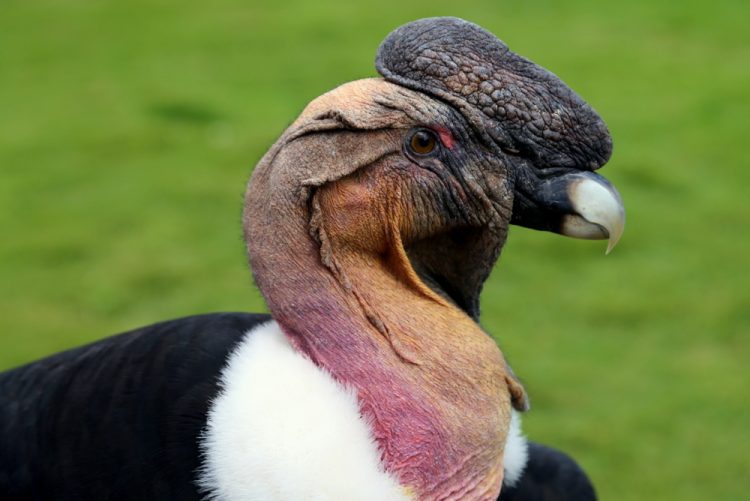
A Male Andean Condor. Photo credit: Shutterstock.
Andean Condors are very sleek looking, with velvety black feathers covering their bodies, and distinctive white flight feathers that reach out like fingers when in the air. Both sexes have the iconic bald head, however, males are much larger than females, have yellow eyes, and sport an eye-catching white ruff at the base of their necks. Females on the other hand, have no ruffle and have red eyes.
4. Live in surprising places
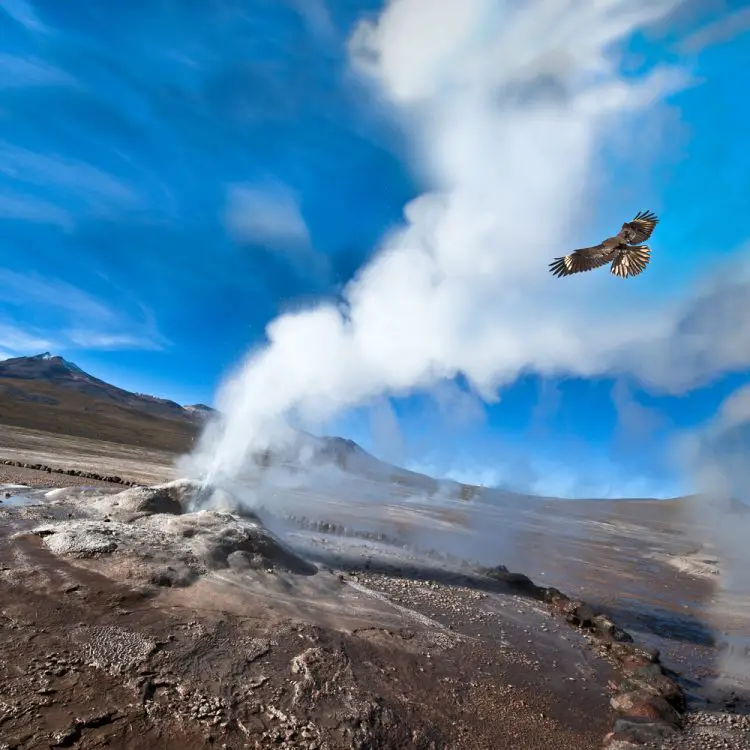
Andean Condor Flying over the Atacama Desert. Photo credit: Shutterstock.
Contrary to their names, the Andean Condors don’t just inhabit the Andean Mountain region of South America. These birds can also be found in coastal areas, enjoying the sea breeze, and even some desert areas, where they take advantage of the thermal air currents. Andean Condor numbers are greatest in Argentina and Southern Chile, however their numbers are dropping in Colombia, Ecuador and Venezuela, making sightings of the bird in these areas increasingly rare.
5. Have unusual parenting techniques
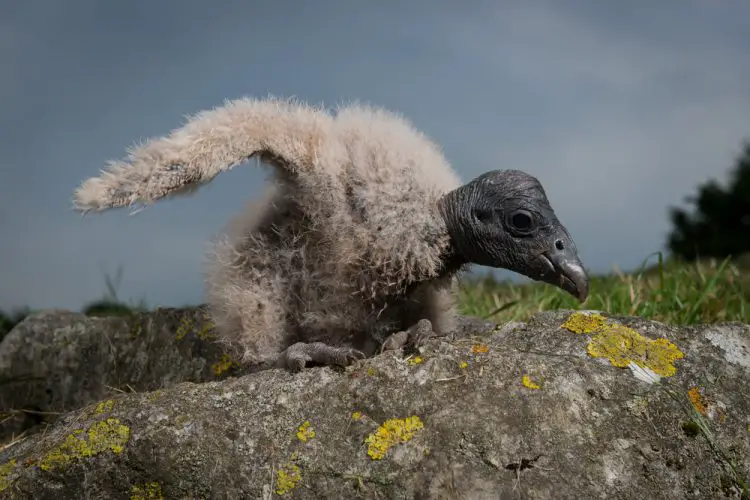
Baby Condor. Photo credit: Shutterstock.
Andean Condors only produce one egg every two years, and the incubation period is long 54-58 days. On top of this, most Andean Condors don’t build a safe, protective nest for their egg, they simply lay it on a bare cliff edge. For these reasons, it takes both parents to incubate and raise the chick together, giving it as much care and attention as possible. Baby Condors usually leave their parents in their second year of life, and take 6-8 years to reach full adulthood.
6. Make a great clean-up crew
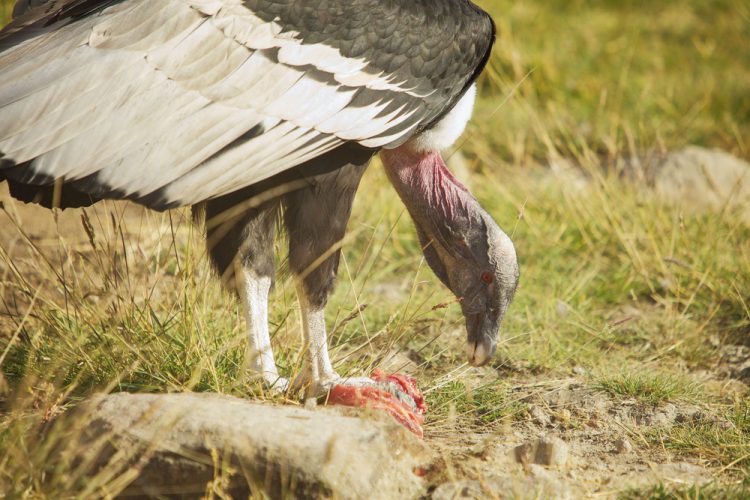
Andean Condor eating his meal. Photo credit: Shutterstock.
As the Andean Condor is a vulture, you can guess that the bulk of its diet will be carrion (dead, decaying flesh). Because of this, these birds perform a very important ecological job, a sort of natural clean-up crew. Andean Condors prefer larger animals, and so along the coast line they will polish off any smelly seal, fish or whale carcasses that have been washed up on shore.
7. Live longer than you think
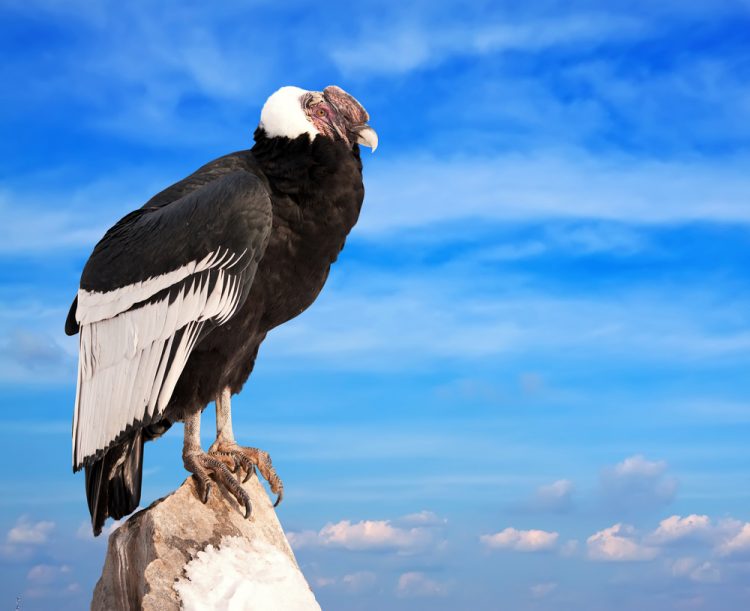
The Andean Condor on the lookout. Photo credit: Shutterstock.
The life expectancy for the Andean Condor is a very fulfilling 50 years. However, some have been known to live up to 75 in captivity. This age is only surpassed by its New World cousin, the California Condor, which has a life expectancy of 60 years in the wild.
8. Are facing extinction
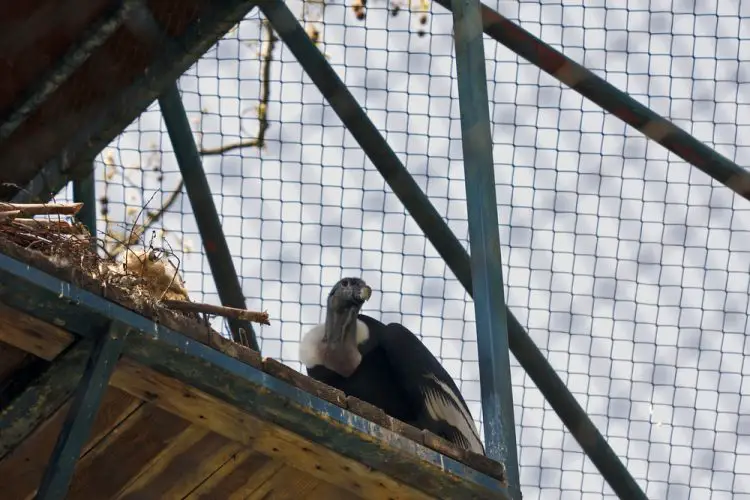
Andean Condor in a zoo. Photo credit: Shutterstock.
With dwindling numbers in the Northern area of it’s habitat, the Andean Condor is definitely in trouble. This magnificent bird was placed on the IUCN Red List of Threatened Species in 1973, and is in danger of becoming completely extinct in the near future. The primary factor in its demise is over hunting by humans that mistakenly believe Condors threaten their livestock. Other factors include loss of habitat, and pesticide poisoning passing up the food chain. However, it’s not all doom and gloom for these beautiful creatures, thanks to the repopulation efforts of many zoos, the Andean Condor is finally beginning to make a comeback.
The Andean condor lives in the entire Andean region, which allows us to use our strategic position in each member country to develop regional initiatives. We work to establish a baseline to understand its historic and actual threats, and to identify the gaps in the information necessary for its conservation which will allow a prioritization of high quality research initiatives.
In Peru, in addition to providing technical support to the Ministry of Agriculture and Irrigation in its conservation initiatives, we have also been analyzing data to create a preliminary map of condor distribution in Peru and Bolivia, based on observations entered on Cornell University Lab of Ornithology’s eBird platform and reported in interviews held by WCS staff.
This map will allow us to identify condor habitats that superpose with communities, extractive activities, infrastructure, protected areas, and other land uses, as well as with different threats and actors that need to be taken account of in the creation of a national plan of action for the conservation of this majestic bird.
facts about the Andean condor
- Its name in quechua is kuntur and the Incas believed it was immortal– it represented the Jananpacha, the upper world of the sky and future.
- The distance between the points of its spread wings (~3.3 meters) represents the largest wingspan of any terrestrial bird.
- The Andean condor is part of four national shields, where it represents different values: Bolivia (boundaryless pursuit), Chile (strength), Colombia (liberty and order), and Ecuador (power, grandeur, and valeur).
- This bird is monogamous and both parents incubate the egg. Its chicks stay with its parents up to 2 years before facing the world alone.
- In certain seasons of the year (October in Peru), the Andean condor flies from the peaks of the Andes to the Pacific coast to eat sea lion carcasses and discarded placentas.
- It’s one of the only predators that can break the hard guanaco skin with its beak alone.
- Andean condors mature sexually late in life (a minimum of 5 years, with reports of the first chick at 11 years), and they only have one chick every 2-3 years. This makes them very vulnerable to threats due to low recovery rates.
- They form part of the family Cathartidae, which comes from the Greek word kathartesmeaning “he who cleans.”
- Andean condors are thermal soarers, which means that they rise with the air current, helping them spot carcasses from great heights and descend upon them without wasting much energy.
- The Andean condor displays sexual dimorphism– this is when animals of the same species have different body forms based on biological sex. The male Andean condor has a white collar and a crest, while the female Andean condor does not.

